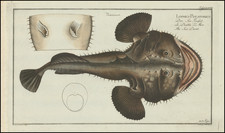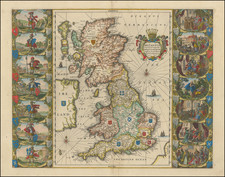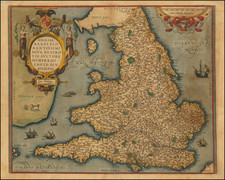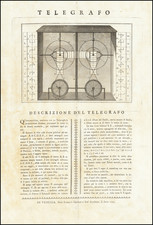The "Draco volans or Flying Dragon."
This mezzotint captures a breathtaking night scene of the meteor observed at Winthorpe on August 18, 1783. The artwork, skillfully created using a combination of mezzotint and etching techniques, is after the work of Henry Robinson, who also published it in the same year. It vividly portrays a large flaming meteor trailed by a shower, as witnessed by an astounded onlooker amidst the ruins of a parish church.
The 18th century was a period of burgeoning scientific inquiry and fascination with celestial phenomena. The observation of the Winthorpe meteor in 1783 was a significant event that captured public imagination, reflecting a growing interest in astronomy and the natural sciences.
In the artwork, Henry Robinson's use of mezzotint with etching highlights the dramatic contrast between the dark night sky and the fiery brilliance of the meteor. The inclusion of a solitary observer, positioned against the backdrop of a ruined church, cottages, and trees, adds a human element to the scene, evoking a sense of awe and wonder. This juxtaposition underscores the contemporary fascination with the sublime and the powerful forces of nature.
Robinson's work offers a unique window into the 18th-century mindset, where the line between science and art was often blurred. The detailed depiction of the Winthorpe meteor event and its impact on the observer and landscape provides a snapshot of historical and scientific significance.
The Great Meteor of 1783
The Great Meteor of 1783 was "among the brightest and most spectacular of such objects ever recorded” and was responsible for some of the “first detailed and generally accurate representations of such a phenomenon” (Beech). It was an event of both scientific and popular interest, illuminating the night sky over a vast region. As noted in an account published in the Evening Chronicle, the meteor's brilliance was so intense that its "lustre almost equalled the sun." Such vivid descriptions underscore the meteor's impact on contemporary observers and its importance as a subject for artistic depiction. Tiberius Cavallo, a renowned natural philosopher of the time, observed the meteor from Windsor Castle, remarking on how "every object appeared very distinct; the whole face of the country being instantly illuminated." These firsthand accounts, as referenced by Richard J. Payne, highlight the meteor's significance in shaping contemporary perceptions of environmental phenomena.











![[ Chatham Harbor ] A Geometrical Plan & North West Elevation of his Majesty's Dock-Yard at Chatham, with ye village of Brompton adjacent.](https://storage.googleapis.com/raremaps/img/small/84698.jpg)

![[England, Scotland & Wales]. Parte Settentrionale del Regno d'Inghilterra . . . (with) Parte Meridionale del Regno d'Inghilterra . . .](https://storage.googleapis.com/raremaps/img/small/89516.jpg)
